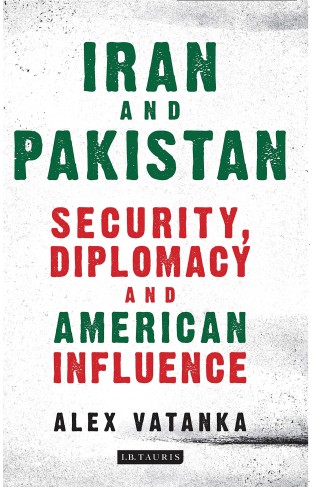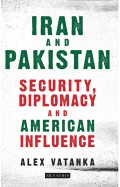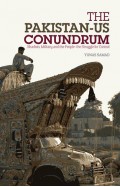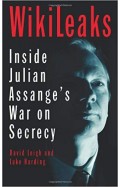Iran and Pakistan Security Diplomacy and American Influence
By: Alex Vatanka
-
Rs 6,295.50
- Rs 6,995.00
- 10%
You save Rs 699.50.
Due to constant currency fluctuation, prices are subject to change with or without notice.
The respective policies of the governments of Iran and Pakistan pose serious challenges to US interests in the Middle East, Asia, and beyond. These two regional powers, with a combined population of around 300 million, have been historically intertwined in various cultural, religious, and political ways. Iran was the first country to recognize the emerging independent state of Pakistan in 1947 and the Shah of Iran was the first head of state to visit the new nation. While this relationship shifted following the 1979 Iranian Revolution, and tensions do exist between Sunni Pakistan and Shi'i Iran, there has nevertheless been a history of cooperation between the two countries in fields that are of great strategic interest to the US: Afghanistan, nuclear proliferation, and terrorism. Yet much of this history of cooperation, conflict, and ongoing interactions remains unexplored. Alex Vatanka here presents the first comprehensive analysis of this long-standing and complex relationship.
The respective policies of the governments of Iran and Pakistan pose serious challenges to US interests in the Middle East, Asia, and beyond. These two regional powers, with a combined population of around 300 million, have been historically intertwined in various cultural, religious, and political ways. Iran was the first country to recognize the emerging independent state of Pakistan in 1947 and the Shah of Iran was the first head of state to visit the new nation. While this relationship shifted following the 1979 Iranian Revolution, and tensions do exist between Sunni Pakistan and Shi'i Iran, there has nevertheless been a history of cooperation between the two countries in fields that are of great strategic interest to the US: Afghanistan, nuclear proliferation, and terrorism. Yet much of this history of cooperation, conflict, and ongoing interactions remains unexplored. Alex Vatanka here presents the first comprehensive analysis of this long-standing and complex relationship.
Iran and Pakistan Security Diplomacy and American Influence
By: Alex Vatanka
Rs 6,295.50 Rs 6,995.00 Ex Tax :Rs 6,295.50
Zubin Mehta: A Musical Journey (An Authorized Biography)
By: VOID - Bakhtiar K. Dadabhoy
Rs 472.50 Rs 1,050.00 Ex Tax :Rs 472.50
The Origins of Political Order From Prehuman Times to the French RevolutioN
By: Francis Fukuyama
Rs 3,505.50 Rs 3,895.00 Ex Tax :Rs 3,505.50
Manning Up: How the Rise of Women Has Turned Men into Boys
By: Kay Hymowitz
Rs 646.75 Rs 995.00 Ex Tax :Rs 646.75
The Obama Syndrome: Surrender At Home War Abroad
By: Tariq Ali
Rs 1,165.50 Rs 1,295.00 Ex Tax :Rs 1,165.50
The Quest For Meaning: Developing A Philosophy Of Pluralism
By: Tariq Ramadan
Rs 1,255.50 Rs 1,395.00 Ex Tax :Rs 1,255.50
The Pakistan US Conundrum Jihadists The Military And The People The Struggle For Control
By: Yunas Samad
Rs 1,255.50 Rs 1,395.00 Ex Tax :Rs 1,255.50
An Enemy We Created: The Myth Of The Taliban Al Qaeda Merger In Afghanistan 19702010
By: Alex Strick van Linschoten
Rs 3,412.50 Rs 5,250.00 Ex Tax :Rs 3,412.50
WikiLeaks: Inside Julian Assanges War on Secrecy
By: David Leigh & Luke Harding
Rs 552.50 Rs 850.00 Ex Tax :Rs 552.50
No recently viewed books available at the moment.
Zubin Mehta: A Musical Journey (An Authorized Biography)
By: VOID - Bakhtiar K. Dadabhoy
Rs 472.50 Rs 1,050.00 Ex Tax :Rs 472.50
Iran and Pakistan Security Diplomacy and American Influence
By: Alex Vatanka
Rs 6,295.50 Rs 6,995.00 Ex Tax :Rs 6,295.50














-120x187.jpg?q6)






-120x187.jpg?q6)



-120x187.jpg?q6)



